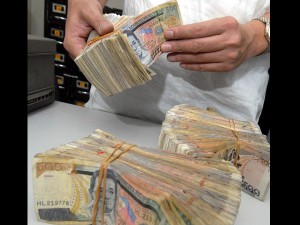Money supply growth in the Philippines slowed to a pace not seen in more than a year, as recent moves to mop up excess liquidity continued to take hold.
Despite slowing liquidity growth, bank loans continued to expand at an elevated rate amid strong demand for cash from both businesses and households, the Bangko Sentral ng Pilipinas (BSP) reported.
“The previous (monetary policy) adjustments … are expected to continue to bring domestic liquidity growth in line with the pace of (economic growth),” the regulator said in a statement.
Domestic liquidity or M3, a measure of the amount of money circulating in the economy, rose by 18.3 percent in July from 23.3 percent the month before. It was the lowest growth rate in liquidity since May 2013.
This is closer to the 12 to 15 percent range the BSP considers “normal.”
At its last four meetings, the BSP’s policymaking monetary board moved to tighten liquidity conditions in the country to avoid fueling excess demand that could lead to higher consumer prices.
In April and May, the BSP ordered banks to set aside more of their clients’ deposits as reserves. In June, rates for special deposit accounts (SDA), one of the BSP’s main sterilization tools for mopping up liquidity, were hiked. This was done to encourage banks to keep more funds idle in BSP vaults.
In July, the BSP hiked policy rates for the first time since 2011. The central bank’s benchmark overnight borrowing and lending rates now stand at 3.75 and 5.75 percent.
Meanwhile, the BSP also reported that outstanding loans by universal and commercial banks grew at a faster 21.8 percent from 20.1 percent the previous month.
Inclusive of BSP placements, loans were up 20.4 percent, faster than the 18.7-percent expansion the month before.
“The continued expansion in bank lending suggests that the momentum of domestic economic activity remains strong,” the BSP said.
